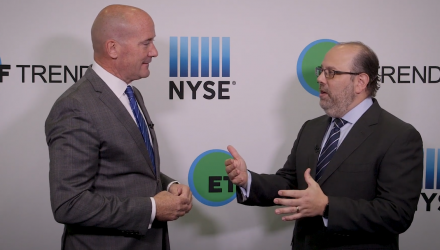ETFs have grown up on traditional beta-index products, but now, a growing group of investors and advisors are looking for more. Consequently, the industry has come out with alternative investments based on customized indices, or smart beta ETF strategies.
“I think what you’re seeing is people looking not just to replicate an index but outperform. You have some drivers and some ability to help perform. If you want to differentiate yourself form advisor A from advisor B, how do you do that? Well you can do it in the services you offer but you can also be the products that you put into your portfolios to potentially generate more alpha for a client over the long term,” said Ed Rosenberg, Senior Vice President, Head of ETFs, for American Century, at the Charles Schwab IMPACT 2018 conference.
For example, American Century has also stepped into the smart beta or factor-based index ETF space with strategies including the American Century Quality Diversified International ETF (NYSEArca: QINT), American Century STOXX U.S. Quality Growth ETF (NYSEArca: QGRO) and American Century STOXX U.S. Quality Value ETF (NYSEArca: VALQ).
The smart beta ETFs utilize American Century Investments’ Intelligent Beta methodology, which systematizes many of the same attributes that fundamental research and security selection seek to identify, in a rules-based, indexed approach.
